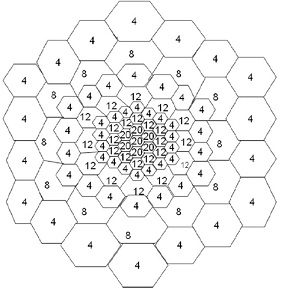Reference no: EM132617157
ITC513 Wireless Networking Concepts - Charles Sturt University
Learning outcome 1: be able to critically analyse wireless networking concepts and their applications in real life situations.
Learning outcome 2: be able to analyse and describe wireless signalling techniques and radio frequency communications.
Learning outcome 3: be able to compare and contrast different wireless networks in terms of size, speed, limitations and applications.
Assessment - Tasks and Design Project
Task 1: Free Space Propagation and Path Loss
In a free space wireless propagation environment, transmit power between a transmitter and receiver usually decreases due to free space path loss denoted as Lf(dB) and can be expressed as a function of distance d between the transmitter and receiver. Your task is to calculate and plot the path loss Lf(dB) for a distance d = 0to 30km and carrier frequency fc = 200, 500 and 1500 MHz. Assuming that the transmit powerPt is 100 watts, you can calculate and plot the received power Pras a function of distance d (as given above) for the carrier frequencies given above. You can assume transmit and receive antennas gains are the same, i.e. Gt = Gr = 0dB .
Deliverable: You are required to plot path loss Lf(dB) as a function of distance for each carrier frequency, so you will have three curves in the plot. You also need to plot received power Pras a function of distance d for each carrier frequency, so you will have three curves of the received power. You need to submit your executable GNU Octave code along with the plots in a single Word file.
Task 2: Research Project
1. You are working as Network Design Engineer with local service provider and your manager has asked you to propose the design for the below cellular architecture shown in Figure 1. In your design provide the following information with reasons; Base station sites locations, Antenna specification (such as antenna shape, height, gains etc), mention the type of the area considering the cell size (such as suburban, metropolitan, rural etc) and justify you design. Note that the numbers within each cell are representing the traffic density in Erlang.
2. Looking at the figure below, justify the design of this cellular network with appropriate reasoning?

Figure 1: Cellular Architecture
Task 3: Viva Questions
Your lecturer will ask questions from Task 1 and Task 2 in the class or online meetings after the due date of the assignment. Viva will be conducted between 7th and 20th September. Please make an appointment with your lecturer. If you fail to give the viva between the abovementioned dates you may get zero marks for Task 3.
Attachment:- Wireless Networking Concepts.rar